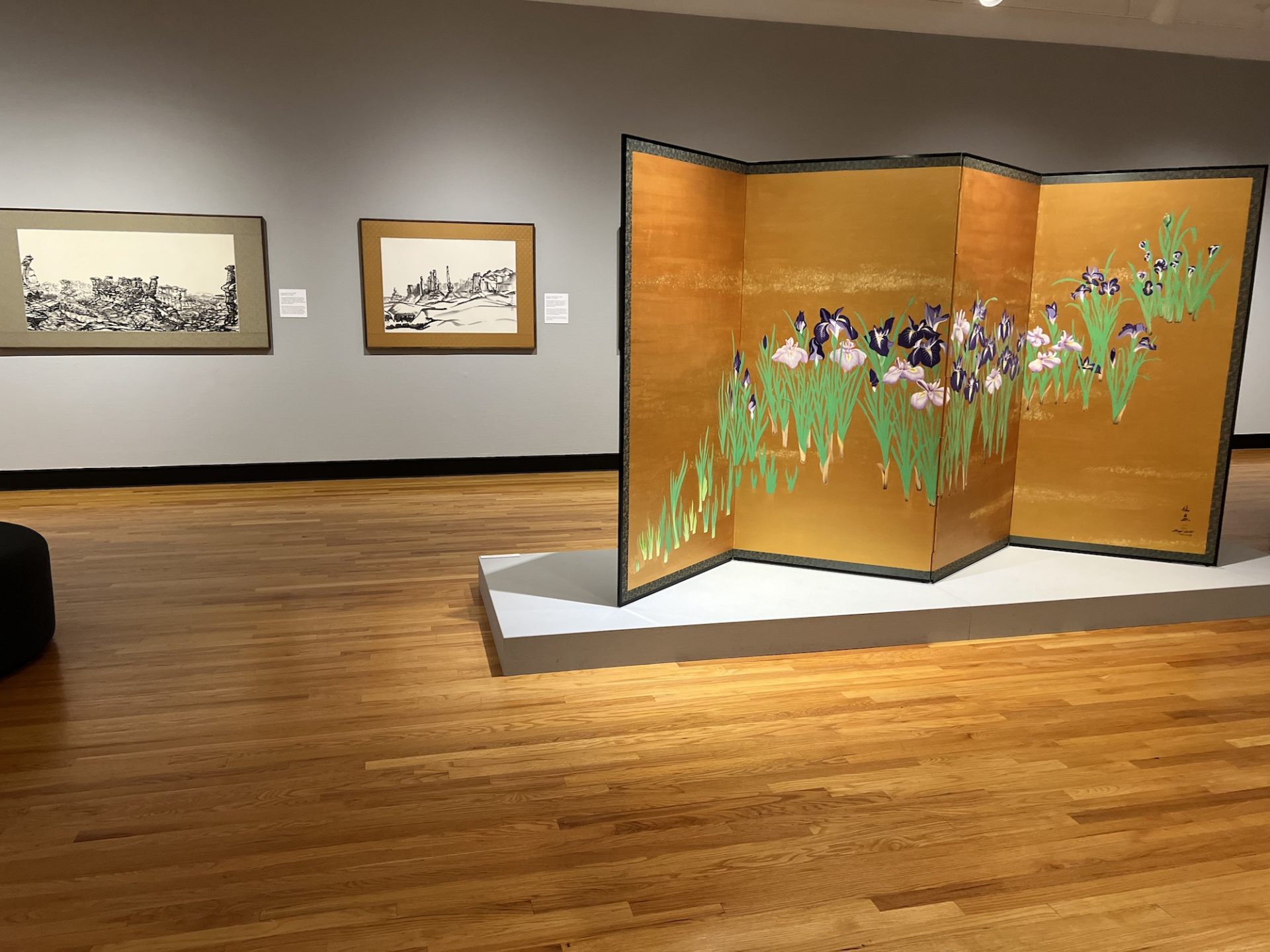As founder of Japan House and professor emeritus of the School of Art and Design, Shozo Sato is a pillar of the Champaign-Urbana arts community. His kabuki adaptations of western classics are well-loved, and he is known for numerous other contributions to the Japanese living arts. Sato’s paintings, as the introductory text to his current exhibit at Krannert Art Museum tells us, have largely been part of a private practice. The Ink Wash Paintings of Shozo Sato, on display through December, showcases a selection of Sato’s black ink work.
The exhibit is co-sponsored by Japan House at Illinois, and expertly curated by Maureen Warren, Curator of European and American Art. When I first entered the gallery, I was struck by how perfectly the pieces fit the room, as though they were created to inhabit this very space. From the entering view, the visible artwork is entirely black, white, grey, and gold/yellow. The gold of the large screen that stands in the center of the room, along with the mats in several of the frames, perfectly coordinates with the wood floor. The black furniture compliments the black of the paintings and the many black frames. As you make your way around the room, the final wall has some color, but even that coordinates seamlessly. It makes quite the visual impact.
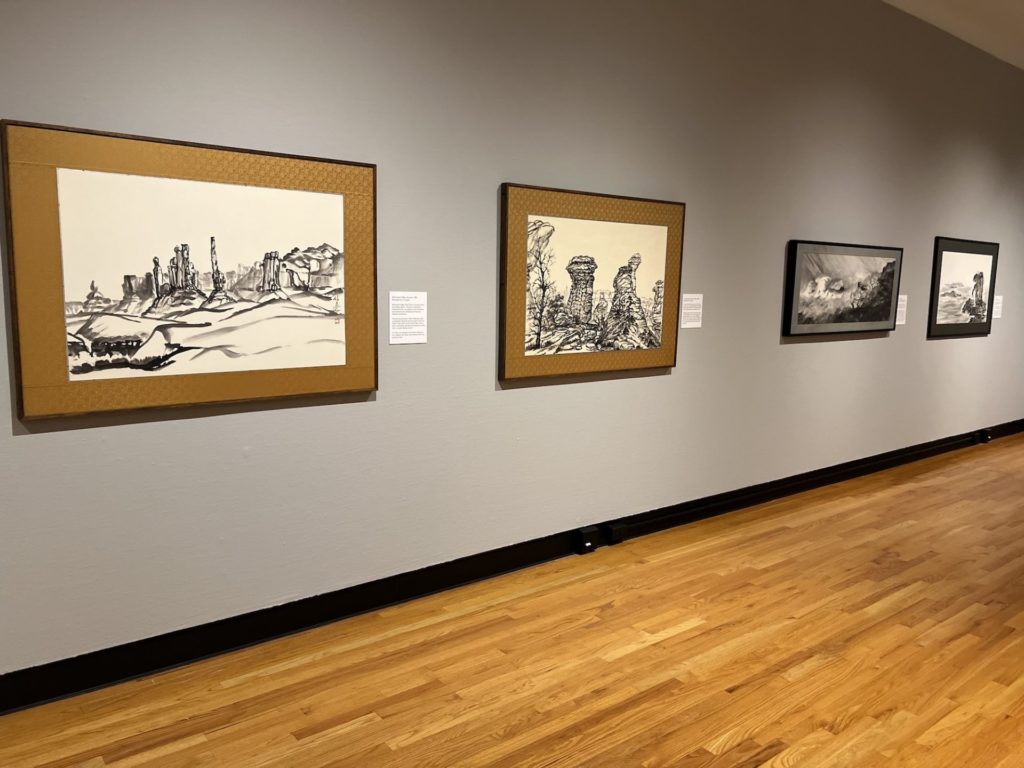
Most, if not all, of the artwork is accompanied by placards with the identifying information about materials and media along with personal vignettes about the creation of the artwork. One of the pieces, Fury of the Pacific, for instance, has a placard that reads:
Once, Sato watched a violent storm hit the California coast. Staring as enormous waves and hurricane force winds battered a tree, he felt a kinship with it, as if the two were in sync. He rushed home, knowing this was a “once in a lifetime creative experience.” Painting in a frenzied state, he developed novel techniques to evoke the crashing waves’ whitecaps. Because of the similarity between the words for peace and Pacific Ocean, Sato describes Fury as a mediation on the destructive power of nature and humans, as well as an ode to peace.
I’ll admit, I’m one of those people who doesn’t always read accompanying text of artwork (despite being an avid reader). But here, I think the experience really relies on the combination of text and visual. It’s interesting, but it really provides an extra dimension and appreciation for the creations. In addition to the individual paintings’ texts, there is a large amount of text printed on the gallery walls, providing more context, stories from Sato’s life, and quotes by the artist.
The artwork, as I mentioned, is mostly black and white. The introductory text explains that when Sato arrived in C-U as a visiting professor in 1964, he faced extensive discrimination and racism. Part of that entailed his colleagues encouraging him to paint in monochromatic colors while leaving color to them. The resulting black and white paintings are, however, quite stunning.
One of my favorites is the piece Survivor, painted in 1995. The depth and shades of black become more impressive the more closely you look, and it’s easy to imagine how the man who painted this would also be a master of calligraphy.
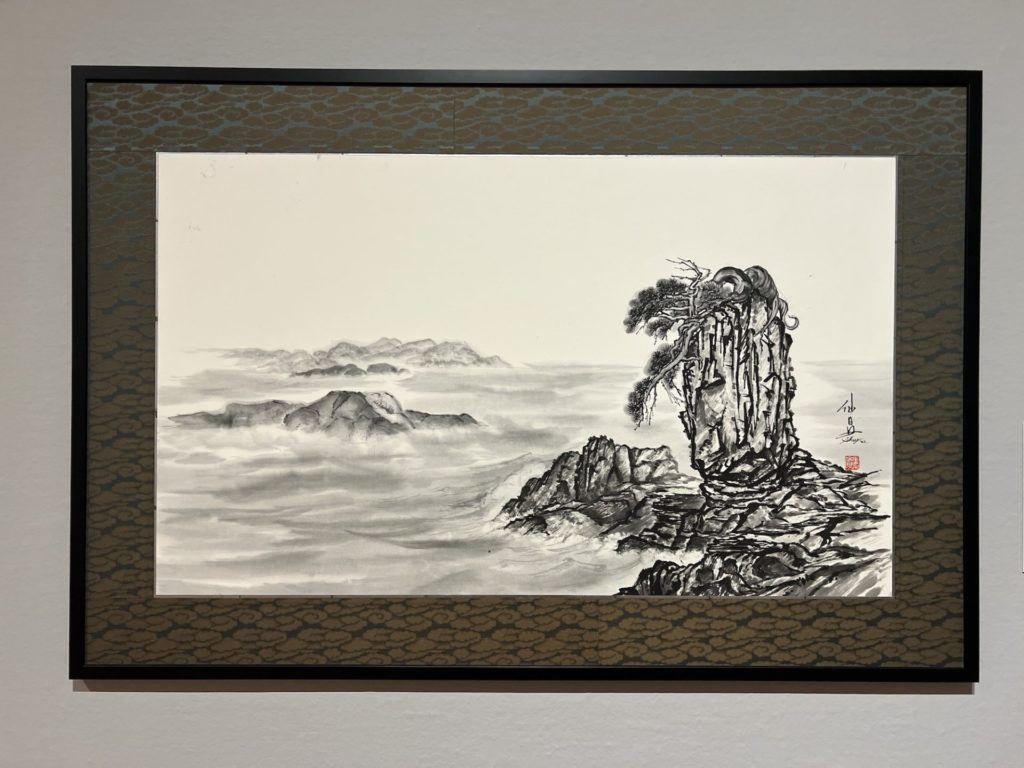
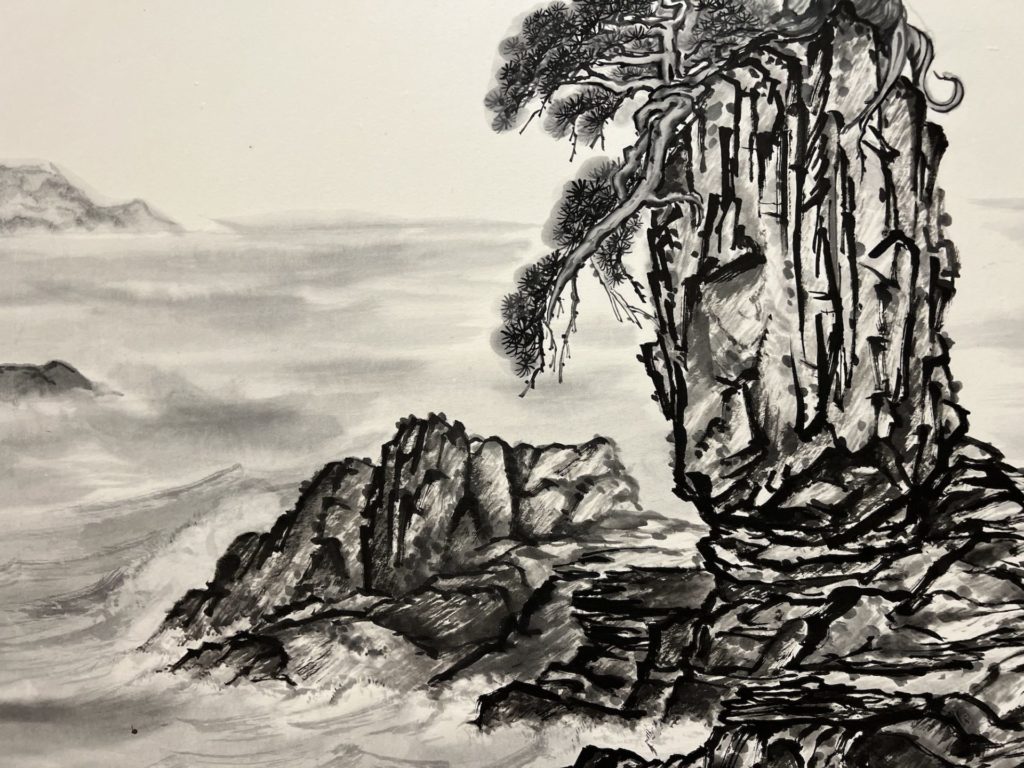
The largest piece in the room is the gorgeous four panel screen that greets you when you enter and takes up the center of the room. It’s two sided, with the front side being predominately gold with flowers making their way up and over, while the reverse side is all tones of grey and resembles a foggy forest. Iris Screen is made of handmade paper over gator board. The mist side was painted during COVID lockdown and “suggests an atmosphere of calm and silence, but also uncertainty.”
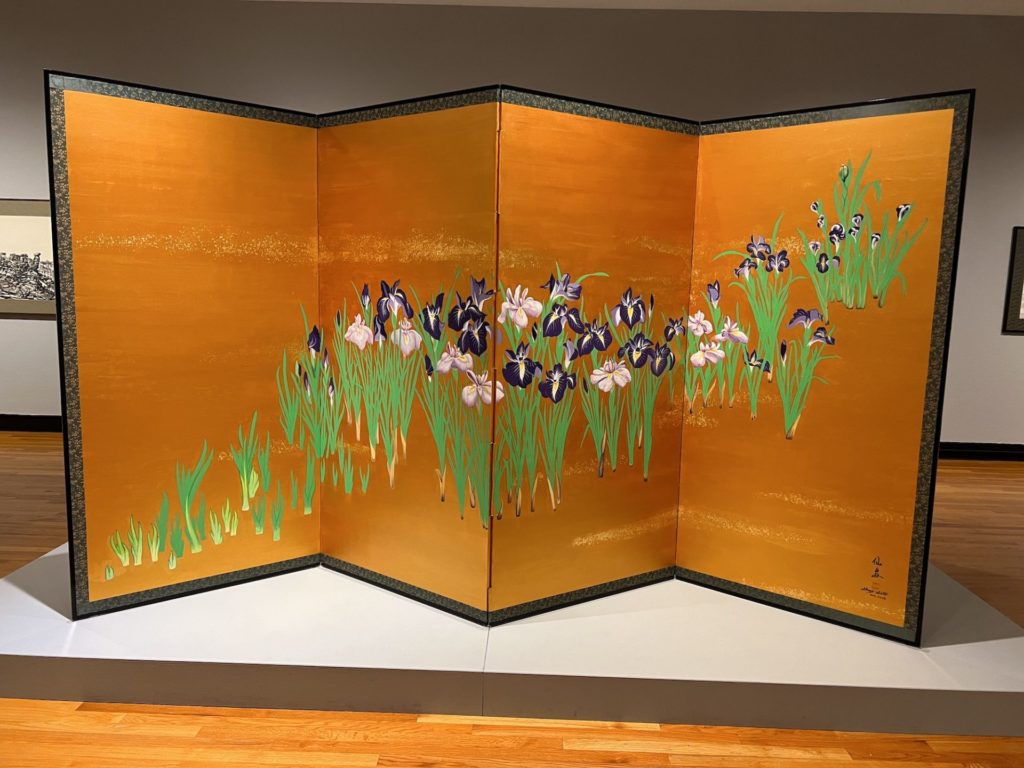
The inner-most wall, not visible when you initially enter the gallery, features paintings with more color, but still using mostly black, orange, and yellow. The series is titled “Child of War, Man of Peace” and depicts the US firebombing of Osaka, Japan in 1945 during World War II. The four paintings on this wall are all newer, painted in 2021. Although this event happened nearly 80 years ago, you can feel the impact of this traumatic event on Sato’s life through these recent paintings. The works, including Osaka Firebombing, City Burns, are simple in theory: a crowd on one side and progressing fire on the other side, largely represented by minimalist black curved strokes that resemble flourishes. When you look more closely, you can see two people trapped under the fire as the others are looking on in horror. It’s horrifying, and even more so with the context of the historical event.
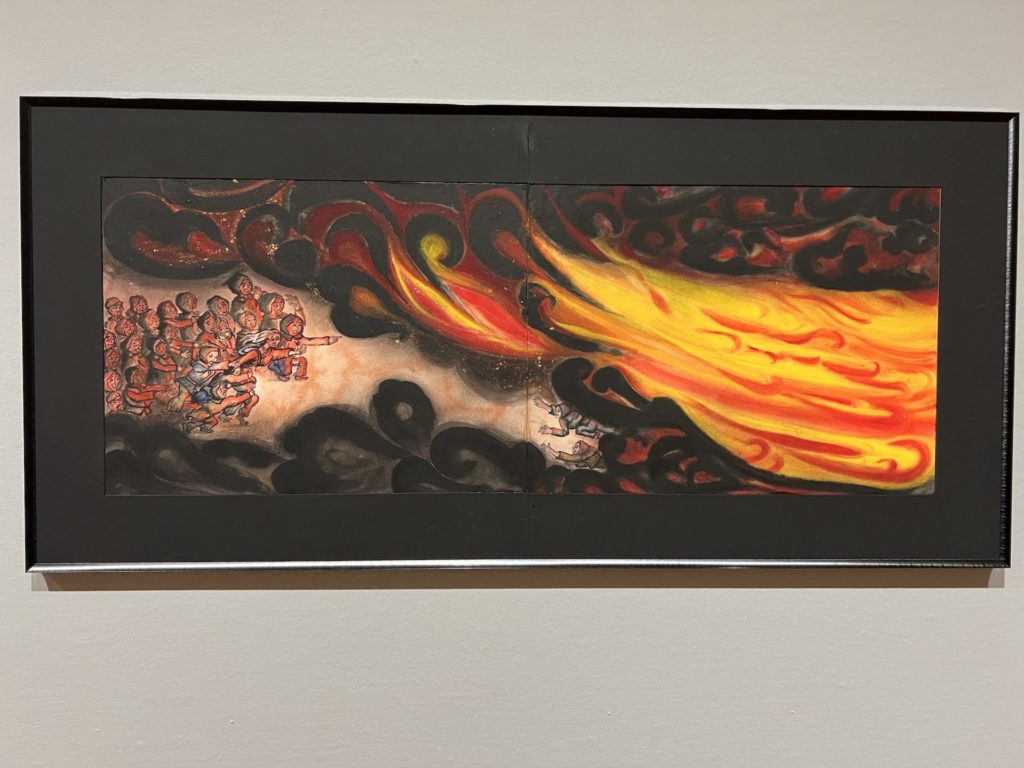
The show will be on display through December 22, 2023. An additional show exhibiting the works of Sato’s calligraphy students will open in September.
The Ink Wash Works of Shozo Sato
Krannert Art Museum
500 E Peabody St
Champaign
Through Dec 22nd
Tu-Sa 10 a.m. to 4 p.m.








